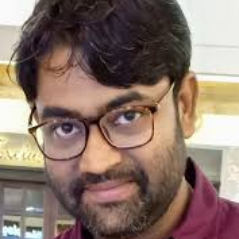
Subhajit Das
Work place: Hiroshima University/HiSIM Research Center, Hiroshima, 739-8530, Japan
E-mail: sjdsubha@hiroshima-u.ac.jp
Website:
Research Interests: Signal Processing, Internet of Things
Biography
Subhajit Das has over 15 years of experience in VLSI Design, Embedded Systems, and Digital Signal Processing in Industry, Research, and Academia. He began his career in the Embedded Systems domain at Wipro Technologies before transitioning to academia at Adamas Institute of Technology, India. During his doctoral research, Subhajit served the Indian Institute of Engineering, Science and Technology Shibpur, India, as an SMDP-C2SD Associate at the School of VLSI Technology. Currently, he is working as Stuff Researcher at Hiroshima University at HiSIM Research Center. His research interest includes nano-interconnect design, power device compact modeling, Internet of Things (IoT), VLSI design, signal processing, modelling of Carbon nanotube and graphene nanoribbon as nano-interconnect etc.
Author Articles
An Efficient Approach for Detection of Compromised SDN Switches and Restoration of Network Flow
By Tinku Adhikari Ajoy Kumar Khan Malay Kule Subhajit Das
DOI: https://doi.org/10.5815/ijcnis.2024.05.05, Pub. Date: 8 Oct. 2024
In Software Defined Networking (SDN) the data plane is separated from the controller plane to achieve better functionality than the traditional networking. Although this approach poses a lot of security vulnerabilities due to its centralized approach. One significant issue is compromised SDN switches because the switches are dumb in SDN architecture and in absence of any intelligence it can be a easy target to the attackers. If one or more switches are attacked and compromised by the attackers, then the whole network might be down or defunct. Therefore, in this work we have devised a strategy to successfully detect the compromised SDN switches, isolate them and then reconstruct the whole network flow again by bypassing the compromised switches. In our proposed approach of detection, we have used two controllers, one as primary and another as secondary which is used to run and validate our algorithm in the detection process. Flow reconstruction is the next job of the secondary controller which after execution is conveyed to the primary controller. A two-controller strategy has been used to balance the additional load of detection and reconstruction activity from the master controller and thus achieved a balanced outcome in terms of running time and CPU utilization. All the propositions are validated by experimental analysis of the results and compared with existing state of the art to satisfy our claim.
[...] Read more.Other Articles
Subscribe to receive issue release notifications and newsletters from MECS Press journals